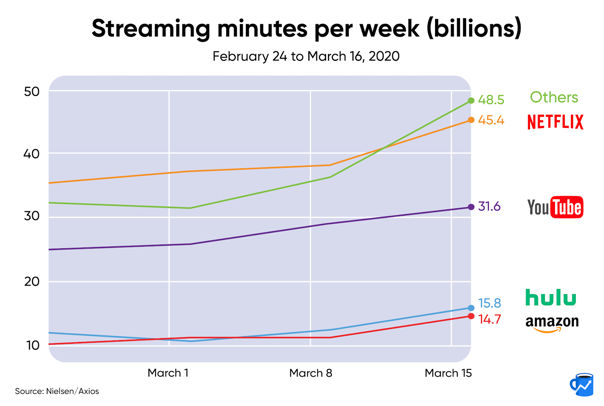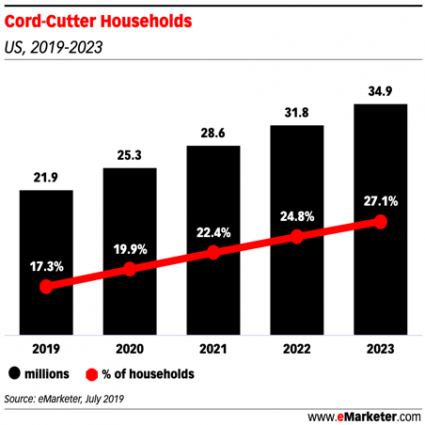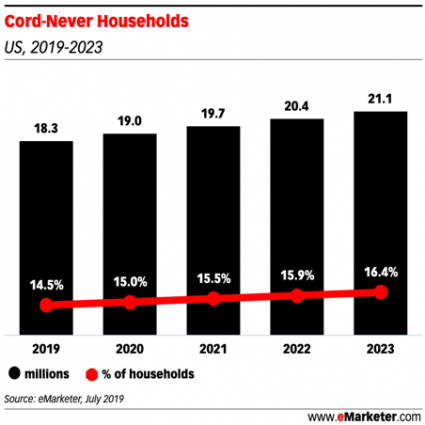Traditional brand marketing isn’t what it used to be. TV audiences have declined, diminishing the impact of TV advertising, while data-driven digital marketing has become more important than ever, ushering in a new era of efficient, measurable, audience-first campaigns. And now, the COVID-19 pandemic has only accelerated these trends.
It’s time for marketers to pivot to a new approach to brand building that takes advantage of the innovations of digital performance marketing. Your brand marketing can be a powerful tool for your brand now and in the future with the right strategy. That’s why we’ve developed a framework that will help you revitalize and reimagine brand marketing as an integral part of your larger cohesive marketing strategy, with measurable business impact: performance branding.
DOWNLOAD NOW
What is performance branding?
Performance branding uses the clear, objective KPIs of performance marketing to make brand marketing spend more accountable and efficient.
In the past, “brand marketing” teams and “performance marketing” teams were kept in separate silos. But it’s time to break down the walls between the two: performance marketing, which uses quantitative data and digital automation to develop customer-centric campaigns, actually provides marketers with the tools you need to modernize and elevate your brand marketing.
Before we explore the performance branding framework, let’s take a step back: why is it time to try this new approach to brand marketing?
The decline of the traditional TV audience
There are some clear trends affecting brand marketing: first of all, broadcast and cable TV audiences are shrinking and aging. Traditional TV still matters as a low cost/high reach medium, and TV data should remain a key input in marketing decision-making, but the ability to connect with target audiences through TV advertising has significantly decreased.
In 2020, more than a third of all US households are either cord-cutters or cord-nevers (viewers who never had a cable subscription to begin with). 88% of those who still watch traditional TV use a second device at the same time, providing a distraction from commercials that limits true brand connections. And viewers who watch TV with DVR can skip commercials entirely.
At the same time, the remaining TV audience has gotten older. In September 2019 premiere-week ratings, the median age of viewers of the Big Four networks was 58.8 years. Traditional TV advertising is becoming less effective at reaching new audiences, limiting its long-term impact.
The rise of digital performance marketing
The second major trend is the digital transformation of marketing as a whole. With new tracking and automation capabilities and a flood of data, brands today have a unique opportunity to re-optimize their marketing strategies across the board for greater business impact.
New data points on customer behavior make deeper personalization possible, boosting campaign performance. And automation on digital platforms like Google and Facebook make it much easier for brands to scale campaigns efficiently and make adjustments quickly.
Of course, with more data comes greater accountability for every marketing dollar invested. From digital to traditional media, attribution (using the tools of performance marketing) has become imperative for brands making sure they are using their budgets as effectively as possible.
Now is the time to make the change to performance branding
The COVID-19 pandemic has accelerated these trends. More people are streaming, ecommerce demand is rising, and the flexibility of digital marketing campaigns is increasingly essential to brands responding to a rapidly changing environment.
The pandemic has also forced most companies to make radical changes to the way they do business. Marketers can sometimes be risk-averse, but today there is less to lose and more to gain from taking a new approach than before.
It’s essential that marketers use data to understand and react to our “new normal.” In the face of the pandemic, marketers need to measure results, make every dollar count, and stay flexible. That’s where performance branding comes in.

Performance marketing and brand marketing: an integrated approach
To bring brand marketing into the current moment and prepare for the future, we can apply lessons learned from digital performance marketing. That’s performance branding in a nutshell.
Performance branding isn’t here to replace TV advertising; instead, it’s a way to revitalize it. By putting objective, real-time, measurable KPIs in place for brand marketing campaigns, we can better understand performance and sync traditional campaigns with digital campaigns. Tearing down silos between performance marketing and brand marketing multiplies impact across platforms.

But how exactly do you revamp your brand marketing strategy? Here’s a rundown of our three-step framework for performance branding:
Set the foundation
Start by finding objective ways to measure the impact of your brand marketing campaigns. Traditionally, marketers have used surveys to measure the results of their brand efforts, but this is too subjective of a method for today’s data-driven world.
You need objective and real-time data on your upper funnel campaigns, and you can get this data by leveraging performance marketing KPIs. (For example, instead of asking consumers whether they find your brand “meaningful,” examine your share metrics on social and video.)
Choose the objective metrics that you believe best measure your brand marketing efforts, put together the tools you need to track these metrics, then compare them to your existing brand health scores.
Experiment with branding for the future
Once your tracking framework is in place, it’s time to systematically supplement and replace your older campaigns with digital proxies that mirror traditional media (like podcast advertising for radio or digital out-of-home for billboards).
(Remember that the same tactics that underpin strategies for brand marketing through traditional media channels can inform your digital performance branding framework.)
Stagger the launches of your new initiatives, supplementing or replacing your least effective campaigns first. To figure out where to begin, you can create a channel matrix and weigh performance according to comparable metrics (like effective CPM) based on the objectives of your campaigns.
Accelerate to scale
After key performance branding initiatives have been added to your marketing mix, you’re ready to use the data you’ve been tracking to map and customize the customer journey for your target audience.
Personalization used to be a heavy manual lift, but now, with massive amounts of data and new automation capabilities, there are exciting opportunities to customize creative in real time with smart inputs. Personalization at scale is now possible, and the data you collect will help you connect with your audience at key moments.

Performance branding maximizes impact across media
Digital and traditional media are stronger together. Performance branding connects them to maximize business impact and unlock new cross-platform opportunities.
When TV viewers turn to their second screen, look up content related to what they’re watching, or message family and friends about what they’re watching, we can be there, too. By breaking down silos with performance branding, we reveal new ways for brands to reach their true potential.









Responses